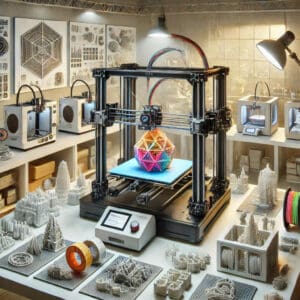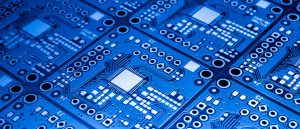News
What is the difference between laser cutting, laser engraving, and laser micro-machining?
Does your project require laser material processing? It is very important to distinguish between laser cutting, laser engraving, and laser micro-machining. You can save time, money, and problems if you know how and when it is right to apply each method.
Laser cutting – precision and speed in a clean and efficient process
Focused laser cutting locally heats the material to melting or evaporation, and then removes the material using gas. The laser head moves according to a CAD file and produces sharp contours even in complex geometries. The local heat-affected zone is relatively small, resulting in a clean finish with almost no distortions, with minimal need for secondary processing.
This type of processing suits thin metals, polymers, wood, glass, and other materials, and enables a high production rate from prototype series to serial production.
Key advantages:
- High precision and tight tolerances even in fine details.
- Speed and efficiency – short cycle times and direct planning from CAD files.
- Quality finish – reduced finishing work.
- Multi-material – suitable for a wide range of materials and thicknesses.
- Little material waste – thanks to system efficiency.
Laser engraving – a precise solution for marking and surface processing
Laser engraving is designed to remove a thin layer from the surface, without penetrating through the entire material. The result is permanent, legible, and precise marking used to create logos, serial numbers, barcodes, textures, and even micro-text. Since there is no mechanical contact, there is no tool wear, and uniformity is very high even in large series.
Common industrial uses:
- Electronics and instrumentation: model markings, QR, laser-mark on housings and adapters.
- Medical: UDI marking on stainless steel and titanium, anti-slip texture on handles.
- Automotive and aerospace: traceability marking on durable metal and plastic parts.
- Consumer products and jewelry: personalization, decoration, and micro-textures.
Micro-machining – precise processing for tiny structures
Laser micro-machining processes use ultra-short laser beams and strict energy control to produce holes, grooves, cuts, and structures at scales of tens of microns. Very short pulses are projected to minimize the heat-affected zone, allowing tiny features to be processed with micron-level tolerances while preserving strength and surface finish.
Why this is critical:
- Semiconductors and microelectronics – stepped holes, dicing, probe preparation.
- Medical devices – micro-openings for dosing, last-chance filters, stents, microfluidics.
- Sensors and optics – processing brittle substrates, windows, and micro-optical elements.
- Composite materials – precise work on ceramics, glass, and composites.
Key differences between the methods
| Criterion | Laser cutting | Laser engraving | Laser micro-machining |
|---|---|---|---|
| Penetration depth | Through the entire material or a significant portion of it | Microns up to tenths of a millimeter in the surface layer | Microns up to several tenths of a millimeter, controlled |
| Achievable precision | High, down to tens of microns | Very high | Micron-level, down to tens of microns and even less |
| Material types | Metals, polymers, wood, glass, fabrics | Almost any material that can be thermally marked | Metals, glass, ceramics, silicon, composites |
| Production costs | Low–medium per unit, high for a simple set-up | Low per unit in series, fast set-up | Higher, due to advanced equipment and strict requirements |
Industrial application domains of laser technologies
Electronic manufacturing: laser cutting is used to prepare stencils, thin lids, and housings; laser engraving for traceability markings on connectors and boards; micro-machining to create tiny holes in semiconductors and micro-channels in microfluidic systems.
Medical instrumentation, micro-machining enables flow-controlled openings and anti-slip patterns, while engraving provides UDI marking resistant to sterilization.
Automotive and aerospace, laser cutting produces lightweight brackets and covers with clean edges, and engraving adds indelible marking for production lines and maintenance inspections.
Quality control and standards compliance in laser processing
To process material accurately, whether with a laser or any other technology, you must start with meticulous measurement. Effective quality control combines CMM measurements, height gauges, calipers, and micrometers, alongside visual and microscopic inspections to verify edges, groove, and Z-height.
To meet customer requirements, as well as relevant ISO standards in the electronics, medical device, and aerospace industries, parameters must be documented and consistency maintained. This preserves uniformity between batches and results in fewer defective products over time.
Matching the laser processing method to project requirements
- Material type and heat sensitivity: when working with glass and ceramics it is advisable to apply micro-machining with short pulses. In contrast, cutting suits thin steels.
- Depth requirement: for marking only, engraving is sufficient. If full separation of the material is required, the most suitable solution is laser cutting. For tiny geometries, it is recommended to use micro-machining.
- Tolerances and finish: micro-machining is ideal for projects with micron-level requirements and challenging surface finish.
- Part size and thickness: the available work area and processable thickness must match the existing machines.
- Production volume: in large series, engraving provides fast and uniform marking; cutting is suitable for efficient prototype production.
- Total cost: it is important to remember that cost is influenced not only by processing time and machine usage, but also by factors such as savings in finishing processes, reduction of defective products, and compliance with regulatory requirements.
- Digital integration: compatibility with CAD/CAM and data transfer.
- Tests and approvals: in the production of medical or military equipment.
Admati Agencies – expertise, technology, and uncompromising precision
At Admati Agencies you will find experts with extensive experience in precise laser processing at every scale, from laser cutting of thin parts to micro-machining of tiny structures.
Our manufacturing capabilities include micro-holes with diameters up to about 50 microns, a processing area up to 200×200 mm, and material processing at typical thicknesses up to about 1 mm, with inspection tolerance of about 10 microns to maintain consistency between parts.
Our collaborations with OpTek Systems and the implementation of ultra-short-pulse lasers allow us to minimize heat-affected zones, protect material properties, and achieve excellent surface finish. The quality control array includes CMM, height gauges, calipers, and micrometers, and operates in accordance with relevant ISO standards.
Whether you come from semiconductors, electronics, medical devices, or defense, we will accompany you from the scoping stage, through optimization of all parameters, and up to serial supply.
Looking for a partner who knows how to turn laser cutting and micro-machining into a competitive advantage? We will be happy to tailor a precise process to your product requirements, without compromising on quality, costs, and timelines.
More News Articles



